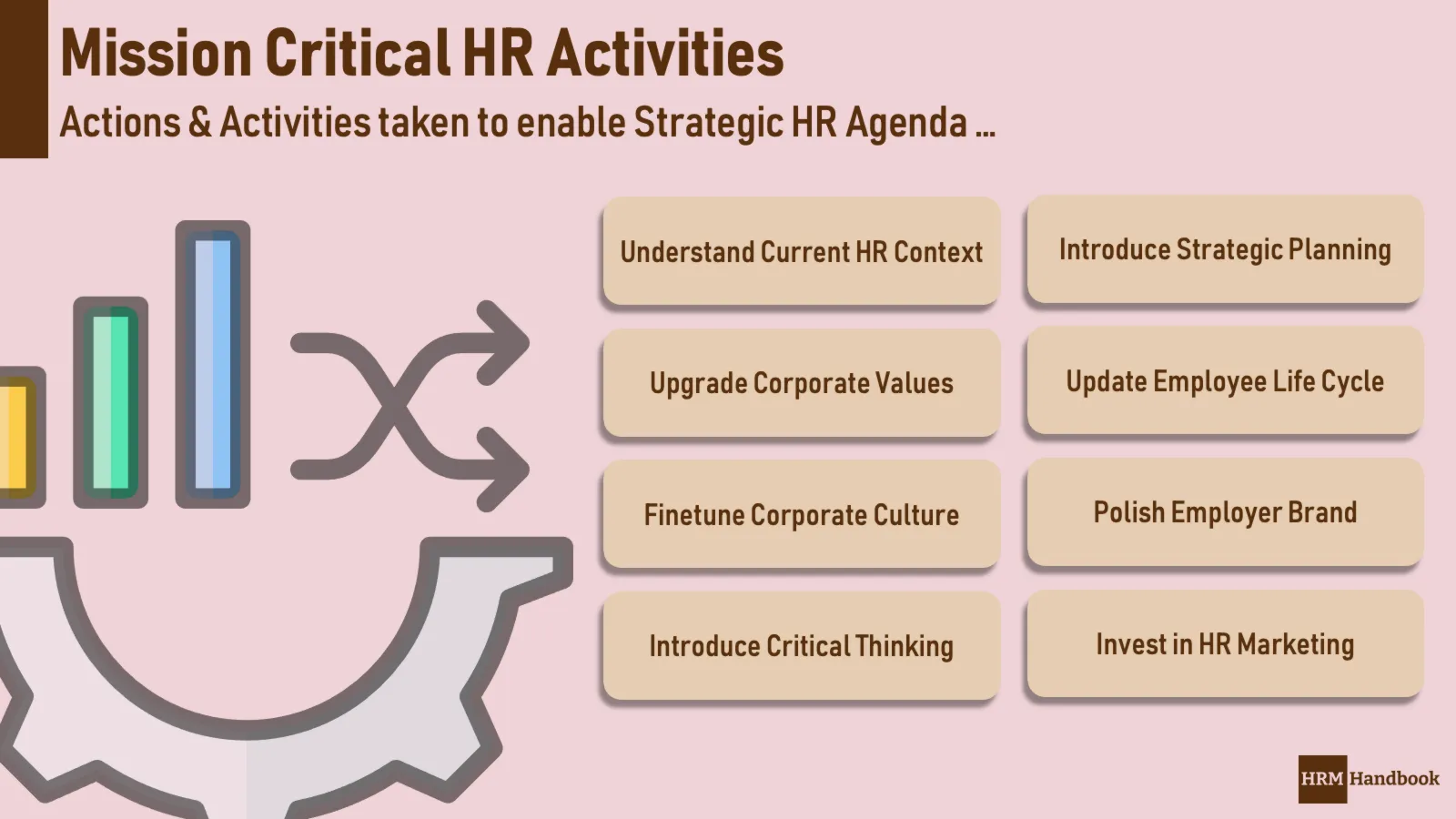Critical Human Resources Activities
There are activities that Human Resources has on its strategic agenda, but there are also activities that need to be on the list today and done very well. They are not activities that will help in any major way in building competitive advantage, but they have to work perfectly before those strategic elements from the HR Strategy can be built.
Just as Rome wasn’t built in a day, the best Human Resources department won’t be built overnight. It takes patience and a willingness to go the extra mile for a company to build such a department. But the result is worth it.
It is only when the critical HR activities are perfectly managed that Human Resources can move to the next level. And that doesn’t include HR administration and payroll accounting; that’s considered a standard not even worth mentioning. Without these critical activities, nothing will work properly and the company will fail to move to the strategic agenda.
These activities are not part of the strategic agenda of human resource management because without them you cannot think of the next level in people management. They need to be perfectly mastered before proceeding to build processes that will perfectly differentiate the organization from other companies in the market.
Sometimes Human Resources departments make the mistake of focusing on some strategically important process but not paying any attention to the fundamentals on which they are building a new building. Then, usually, that building collapses quickly and damages the reputation of the Human Resources people.
Human Resources Review (or Audit) as a first step
Every strategic activity should include a description of the current state at the beginning. Only if I know where I stand can I use the map to get from point A to point B. Because if I don’t know where I stand, I am only guessing my future actions and most likely going about it the wrong way.
This is the Achilles heel of the people in Human Resources. They don’t like to look at the status quo and pay no attention to it the moment they get excited about the possibility of setting out to build something new. It’s just that this approach never leads to internal customer satisfaction. They, in turn, expect everything to work perfectly before launching something new.

The Human Resources Review may be seen as a redundant step, but you’ll find in other discussions that you have to go back to the status quo description because you need to anchor the discussions in the company. You must first truthfully describe what the present looks like before you can have a meaningful discussion about the future.
Such a review is not complicated, just look at:
- describe your current HR processes (RACI is sufficient),
- collect the available data on HR processes,
- collect data on employees,
- do a SWOT analysis of the HR department,
- agree on conclusions.
And then you can move on to the next step, building the critical processes you need to have in place before you get into the really strategic stuff.
Critical HR activities
So what are the critical HR processes (and not necessarily in that order):
- Employer Brand
- Employee Experience
- Employee Life Cycle
- Voice of Employee
- HR Marketing and HR Communications
- Corporate Social Responsibility
- corporate culture
- critical thinking
- strategic thinking and planning
Employer Brand is a very modern HR term today. As the job market conditions are getting progressively worse, the company’s name is gaining importance in the job market. Only the best have a chance of being able to choose from candidates for positions. Others will have to make do with the leftovers, but will also be forced to pay for the services of recruitment agencies. This will of course partially weaken them, because they cannot use the money they spend on external recruitment agencies for higher added value activities.

We often tend to ignore the Employee Life Cycle, yet it is the procedural basis for working smoothly with employees in a company. It ensures that core processes build on each other seamlessly and that managers and employees can plan their activities and are not surprised to find that at peak times they have to set aside time for a demanding process that the HR department has just mandated.
HR Marketing is also a critical activity because every other element of the HR strategy requires clear communication support and explanation. These are often not simple topics and good communication needs to be addressed continuously and conceptually, otherwise it only leads to employee frustration. Their expectations are not met and strategic solutions are gradually forgotten because no one wants to use them.